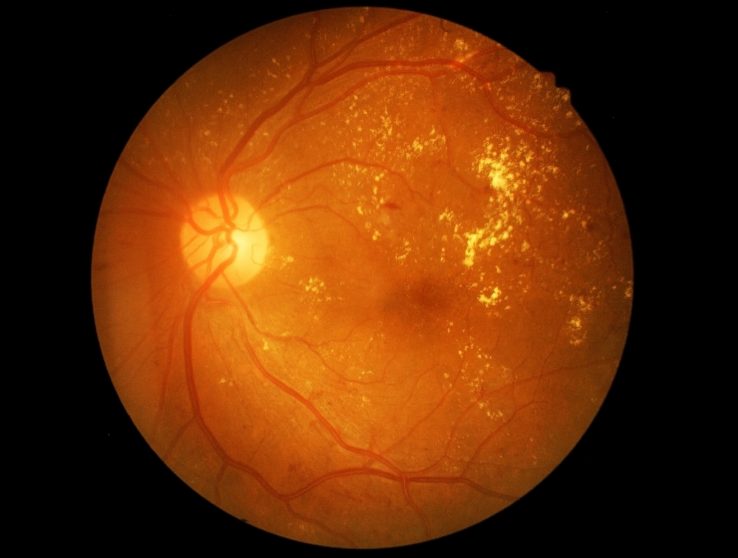
By Alisa Kim
When Dr. Aleksandra Stanimirovic emigrated to Canada from Serbia, her intention was to continue her medical training as a doctor. Throughout her education, however, Stanimirovic, a postdoctoral fellow at the Institute of Health Policy, Management and Evaluation (IHPME), realized that being a researcher was a better match for her goals.
“I thought as a clinician, my impact is somewhat limited to my patients, whereas with the research I’m doing now, for example, which is focused on policy change, my impact can be farther reaching. I can influence the outcomes not just of patients, but their caregivers and researchers,” says Stanimirovic, who is also a postdoctoral fellow in the Health System and Technology Evaluation Program at Toronto General Hospital Research Institute, and a trainee in the Diabetes Action Canada CIHR SPOR Network.
Stanimirovic has published a protocol for a study she is leading that looks at the barriers and enablers to screening for diabetic retinopathy among women from lower socioeconomic groups. Diabetic retinopathy is a complication of diabetes that can lead to blindness. In Canada, more than 3 million people have diabetes; by 2025, that number will swell to 5 million.
Early detection and treatment of diabetic retinopathy can prevent most vision loss, notes Stanimirovic, but in general, there is an inverse relationship between screening, income and gender. Research shows, for instance, that women from lower socioeconomic groups are less likely to be screened for breast cancer and colon cancer.
She will study those who participated in a teleretina program, which provides diabetic retinopathy screening via a mobile clinic, to users of the South Riverdale Community Health Centre in downtown Toronto during the period 2014 to 2019. The Toronto teleretina screening program was developed to address difficulties in getting vision checkups by Canadians with diabetes. It is geared toward low-income communities with a high prevalence of diabetes and low diabetic retinopathy screening rates.
A prior study led by Stanimirovic and her supervisor, Dr. Valeria Rac, showed the program was a more cost-effective way of screening than standard of care in underscreened disadvantaged communities. It cited prior research that found 37% of the people who participated in the program had never had an eye exam, and 27% of the screened cohort were diagnosed with diabetic retinopathy.

“When looking at women in lower socioeconomic groups, usually those with diabetes have multiple health conditions and very limited resources. This impedes their opportunity to achieve health equity, which is access to health resources,” says Stanimirovic. “There’s more than one factor that intersects to create this challenge of health inequity. These could be age, gender, ethnic background, etc. They all come together and create a condition of health inequity. The oppression doesn’t come from one factor; it comes from the intersectionality of all these factors that we call social determinants of health.”
Looking at the design, implementation and evaluation of health interventions with the intersectionality framework is important, says Rac. “I want to bring that lens for people to think through when they plan to implement a new program. What is the effect of that program with respect to equity and access to care on women, people from lower socioeconomic groups or people from certain cultures or racial backgrounds? We need to think comprehensively about this when we are bringing something new to the [health] system,” she says.
Stanimirovic will examine how many people from the South Riverdale Community Health Centre—some of whom lack Ontario health insurance—were referred for screening, the number of people who had it done, and outcomes of screening. She will identify differences in referral and screening rates among men and women.
There is also a qualitative aspect to the study that involves speaking with patients, care providers and administrators of the teleretina program to gather feedback on what is working and how it can be improved. By understanding the barriers and facilitators to screening, she hopes to develop engagement strategies that are more culturally appropriate for specific groups.
“We want to understand from those who identify as women what are the barriers for getting screening. Is it because they’re taking care of kids? Maybe they’re not aware [the program] exists? Maybe they have competing priorities. We hope the thematic analysis will guide us in culturally reshaping this initiative. Research has shown cultural components are critical in the success of community implementation,” says Stanimirovic.
The aim, she says, is to increase rates of screening for diabetic retinopathy within the study population to detect changes in vision early so people can get the appropriate care. “I don’t want to be [naïve] and think everybody’s going to get screened, but even small steps may improve their quality of life significantly. I would like this to be an intervention that’s tailored to their needs and context, with the hope that it will improve their quality of care and quality of life.”
Dr. Stanimirovic is supported by a Trainee Internship Award from Diabetes Action Canada.
Related News

Sign up for IHPME Connect.
Keep up to date with IHPME’s News & Research, Events & Program, Recognition, e-newsletter.
Subscribe to Connect Newsletter
Get in Contact
Communications
Marielle Boutin
Email Address: ihpme.communications@utoronto.ca





